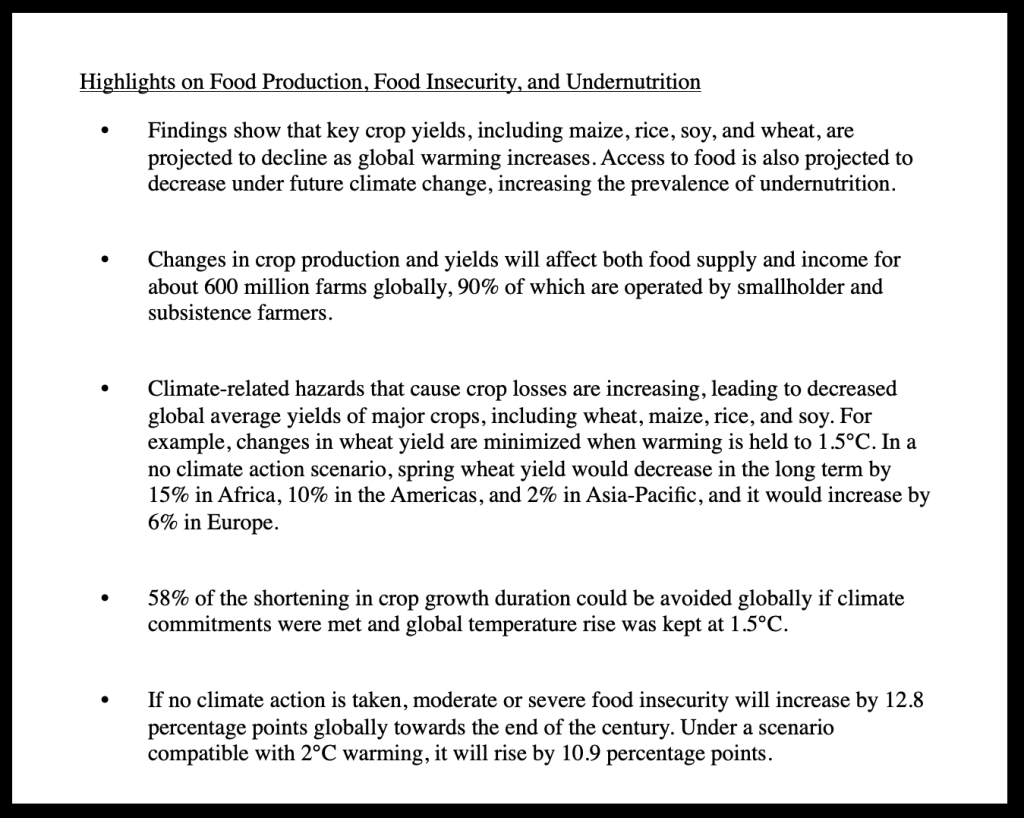The Climate Vulnerability Monitor (CVM) is an independent global assessment of the impacts of human-induced climate change in the 21st century. The CVM3 presents the data according to climate scenarios and modelling frameworks that are consistent with the IPCC’s Sixth Assessment Report (AR6). Specifically, these are a 1.5°C scenario, a below 2°C scenario and a “no climate action” scenario (assuming no significant additional climate mitigation), with no special or additional adaptation action foreseen in any scenario, with the latter scenario approaching peak warming of 3.6°C by the end of this century.
Key messages
-
Climate change impacts generate loss and damage, creating crises for society, human health, and development globally. For instance, the Climate Vulnerable Forum and V20 members that commissioned this report are estimated to experience economic losses due to global warming of 0.9% of GDP per capita growth on average between 2000 and 2019, resulting in a cumulative loss of 20% of all economic growth potential, in absolute terms, for these countries over that time period. Also Compared to the recent norm (from 1995 to 2014), as soon as 2030 an eight-fold increase in drought events is projected for key world regions (Africa and the Americas).
-
Asymmetric impact deepens global inequalities and injustice. Poorer and more vulnerable nations are by far the hardest hit. By way of specific impact examples, the highest increases in climate-attributable food insecurity presented in this CVM3 are projected to be in Sierra Leone, Liberia, Central African Republic, and Somalia, all low HDI countries and least developed countries (LDCs) that already face high levels of food insecurity. If no climate action is taken, the increase in heatwave events is projected to cause global food insecurity to rise by 12.8 percentage points. Decreases in yields are, moreover, most acute across Africa, with CVM3 projections of 5–30% decreases in maize and rice, and from 10% to more than 40% decreases in wheat yields by the end of the century. Heavily affected vulnerable countries – whether the 46 LDCs (responsible for 1% of global GHG emissions to date), the 38 Small Island Developing States (less than 1% of global emissions), the 58 Climate Vulnerable Forum and V20 member states (4–5%), or the 54 African nations (3–4%) – have contributed marginally to the causes of anthropogenic global heating.
-
Nobody is spared. Wealthier, high-capacity regions, although less vulnerable and better equipped to adapt and to minimize and address losses and damage, will nevertheless experience substantial negative economic impacts from climate change.
-
World should urgently prepare for and adapt to rapid escalation in climatic shocks.
-
Absent climate action, end-of-century impacts dwarf climate shocks to date. In addition to the extreme climate impacts projected for the coming decade at around 1.5°C of warming, the assessments of CVM3 enable comparison with higher warming scenarios over the longer term. Drought events in all regions of the world, for example, are projected to become 5–11 times more frequent by 2050 in a below 2°C scenario compared with the recent past. By the end of the century, they would be 8–12 times more frequent, increasing to 12–14 more frequent for a no-action scenario. Illustrating once more why the CVM3 is entitled “A Planet on Fire,” under a no climate action scenario, exposure to very high wildfire risk is projected to increase by the end of the century in the Middle East by 74 days, or 250%, and by 65 days, or 500% in Southern Africa, with respect to the recent past.
-
Limiting warming to 1.5°C will prevent a potentially massive expansion in climate impacts beyond 2030. The seemingly marginal difference between 1.5°C and below 2°C belies a very considerable difference in climate change impacts that society would in fact experience at those two levels. Climate-related hazards that cause crop losses are increasing, leading to decreased global average yields of major crops, including wheat, maize, rice, and soy. 58% of the potential projected shortening in the growth duration of the key global staple of maize could be avoided globally if global temperature rises were kept at 1.5°C. Precipitation decreases are projected to reach as much as 20% or more in a below 2°C scenario for the Mediterranean basin and in Western and Central Africa are halved at 1.5°C of warming. Economic damages more than double globally on average in a below 2°C scenario versus 1.5°C. A drastic scaling up of climate action must happen in the remaining years of this decade to avoid the worst repercussions of climate change, given the short and fast-shrinking window to limit temperature rise to 1.5°C.
-
Accelerated adaptation action and efforts to address loss and damage are essential. United Nations Environment Programme (UNEP), indicates that adaptation financing needs in developing countries – which depend on the level of climate impacts – are estimated to be five to 10 times greater than current international public adaptation finance flows. Lower income countries’ climate adaptation finance needs are estimated by IPCC AR6 to be US$100–400 billion by 2030, while UNEP estimated developing countries’ adaptation financing needs in 2030 to be US$100–300 billion. Some 21% of all countries also lack any form of national climate adaptation planning document.
-
Increased knowledge and data essential.

| Year of publication | |
| Publisher | Climate Vulnerable Forum (CVF) and Vulnerable Twenty (V20) Group Secretariat, Global Center on Adaptation, Aroha, Climate Analytics, Lancet Countdown, and finres |
| Geographic coverage | PhilippinesSaint LuciaBangladeshKenyaGhanaGlobal |
| Originally published | 29 Nov 2022 |
| Knowledge service | Metadata | Global Food and Nutrition Security | Climate extremes and food security | Extreme weather event |
| Digital Europa Thesaurus (DET) | impact studyModellingclimate changeglobal warmingClimate change mitigationadaptation to climate changeCrop yieldfood securitydrought |
